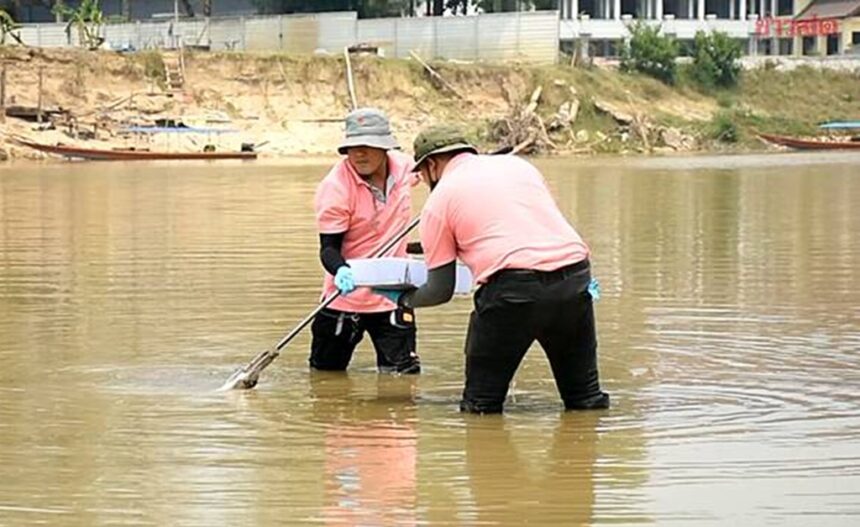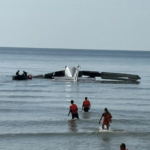Chiang Rai – Tests reveal high levels of arsenic in Mae Kok River, sparking concerns as it supplies water for local use. Authorities urge caution and recommend seeking medical attention if unusual symptoms occur.
On April 4, 2025, Mr. Awee Phakmat, Director of the Office of Environmental Management and Pollution Control in Chiang Mai, shared alarming results from water quality tests conducted in Mae Kok River.
While no traces of cyanide were detected—likely due to its natural breakdown under sunlight and heat—arsenic was found above acceptable limits in soil samples.
Mr. Awee said soil samples collected from Mae Ai District in Chiang Mai, just 500 metres from the Myanmar border, showed arsenic levels at 0.026 mg/l, twice the standard limit of 0.01 mg/l in the Mae Kok River.
Further testing at other locations, including near the Tha Ton Bridge and downstream areas, confirmed that arsenic levels exceeded safety standards across three sites.
Prolonged exposure to contaminated water can cause serious health issues such as skin changes, cancer, and food poisoning. Immediate medical attention is advised for anyone experiencing symptoms after exposure.
Mr. Awee emphasized the importance of precautionary measures. He advised residents against swimming in the river for extended periods and highlighted increased risks for individuals with open wounds.
Local water treatment processes must also be reviewed to ensure safety, as arsenic can enter the food chain through aquatic life.
Mae Kok River Drinking Water
Meanwhile, Chiang Rai residents, who depend on Mae Kok River for drinking water, are anxiously awaiting test results from samples collected on March 24. While arsenic tends to settle into sediment, reducing its immediate impact, experts recommend avoiding accidental ingestion of river water and seeking medical help for any irritation or discomfort.
Ms Somporn Phengkham, Director of the Community Health Impact Assessment Platform, noted that gold mining activities near the river’s source likely contributed to the contamination. She stressed the need for further tests, including mercury levels, by analysing predator fish from the river.
If mercury is detected, swift communication is essential to inform the public and mitigate risks.
Experts suggest closely monitoring the Mae Kok River’s sediment along its entire length, from the source to Chiang Rai, to assess the severity of the contamination. Public warnings and preventive measures must remain in place until effective solutions are implemented.
Mr Somkiat Khuan Chiang Sa, President of the Rivers for Life Association, called for collaborative action between local governments and authorities from Wa State, where upstream mining operations are believed to be the source of contamination.
He urged Thailand’s Ministry of Foreign Affairs to mediate discussions and propose solutions. Adapting existing models, such as Thailand’s Department of Fisheries protocols, could help address the issue while respecting both nations’ legal frameworks.
Efforts are also underway to inform fishing communities, farmers, and others who rely on the river about the ongoing situation. Local groups are actively exploring ways to adapt to these challenges while awaiting a resolution.
Related News:
Gold Mining in Myanmar Sparks Environmental Concerns Over Chiang Rai’s Water Supply

Anna Wong serves as the editor of the Chiang Rai Times, bringing precision and clarity to the publication. Her leadership ensures that the news reaches readers with accuracy and insight. With a keen eye for detail,














